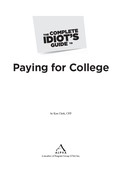The Non-Nuclear Family and Financial Aid
Single parents, blended families, shared custody, and unpaid child support are phrases that apply to more families of college-bound students than ever before. These “non-nuclear” families, with a sticky web of intertwining obligations and complicated emotions, can create some major anxiety when it comes to filling out the FAFSA and other financial aid forms.
Many students have no clue how much one or both parents make, with at least one parent often reluctant to actually disclose his income or assets for fear of the other party taking advantage of him. Just as often, a student still dependent on one party doesn’t even know how to get in contact with the other parent, who might have been out of the picture for years or even decades.
Even though the rules can be confusing at times, the single best option for making sense of them is to contact the financial aid administrator at the school you will be attending. He will be able to walk you through the unique facets of what is needed for your situation and what to do if you cannot get the information you need. But, as a general rule, here’s who is responsible for filling out the FAFSA and helping to pay for the education of a child:
• The custodial parent—The parent with whom the child lives for the majority of the year and who provides the majority of the support is the one responsible for helping a student complete his FAFSA.
• Noncustodial parents—Depending on state law, a biological parent living separately from the custodial parent and child might or might not have a financial obligation to help the custodial parent pay for college. From a federal financial aid point of view, this parent’s assets and income are not part of the student’s EFC calculation. However, many private schools that rely on the CSS application do include the incomes and assets of both parents, even if they’re no longer a couple, as part of their consideration for aid.
• Step-parents—If the custodial parent of a child remarries, the step-parent’s assets are factored into the federal EFC calculation, even though the child is not the step-parent’s biological child.
The Least You Need to Know
• If you want to increase your financial aid, you have to lower your expected family contribution (EFC).
• The assets and income of a student hurt financial aid eligibility significantly more than those of the parents.
• Students and parents should try to convert cash and other includable assets into protected assets, especially goods that will eventually need to be purchased anyway.
• If any existing income can be pushed forward or backward into a higher EFC year, it can result in more overall aid than if kept in the current year.
• If you’re living in a non-nuclear family, you’ll need to do your homework well in advance of financial aid deadlines to ensure that you have all the information you need.
..................Content has been hidden....................
You can't read the all page of ebook, please click here login for view all page.
